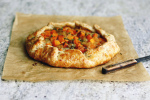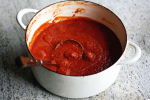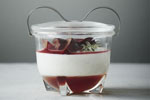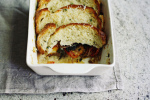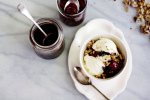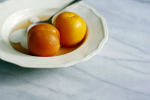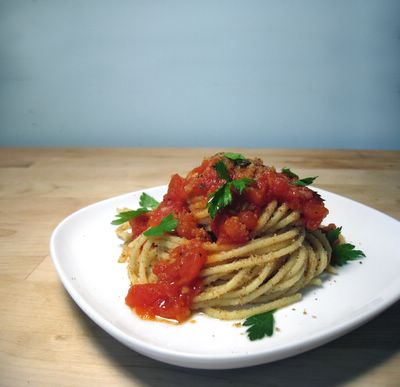A season of thanks
 Saturday, November 5, 2005 at 10:57AM
Saturday, November 5, 2005 at 10:57AM I must sheepishly admit, there are certain things I take for granted. I do not mean to do so, it just sort of … happens.
From the reliability of routines to the seasonal wonders of the landscape around me, there are things I forget to be thankful for as often as I should. And while the list is probably too lengthy to comprehend now, I have recently rekindled an appreciation for one of the most basic elements of my day-to-day life – home cooking.
Getting over a recent bout of the flu, complete with trips to the emergency room and the requisite nastiness of nausea, I could not fathom the idea of making (let alone consuming) anything more than the customary diet of dry toast and flat ginger ale.
Even when my dear S was kind enough to prop me up on the couch, tucked up to the neck with blankets and my feet swaddled in the fuzziest of slippers, I could not bring myself to watch the library of cooking shows waiting patiently on our digital recorder. Food and I had parted company – the kitchen remained empty and the fridge was virtually cleaned out (save for the beloved ginger ale).
Prompted by some idle flicking through the glossy pages of food magazines, it was only over the last few days that I have ventured back into the kitchen. I was drawn back into the simple choreography of making dinner – and immediately realized how very much I had missed it. I was not at a stage where I felt confident enough to tackle anything new or at all exotic, so the tried-and-true meals from my everyday repertoire were a godsend; comforting and familiar all at once.
These meals are truly the ones that resonate the most with me. They rarely require recipes, and more often than not are variations on a theme rather than replicas of meals past. It is the most spontaneous of my cooking, where I improvise depending on the mood I am in, or what there is to be had from the pantry.
We often take the value of these meals for granted. All too frequently lavishing attention onto those aforementioned magazines and recipe books; feeling as though these “humble” meals are somehow inferior, even though they are what sustain us on an every day basis.
Maybe I’ve been slowed down because I am still a bit sick, or maybe this little hiatus has made me more appreciative, but these most recent meals have been particularly enjoyed. I have taken the moment to savour the smells wafting up from the pan, the textures of each ingredient and the taste of the final product.
With this appreciation in mind I raise my spoon to tonight’s feast, “never-made-the-same-way-twice” chili and cornbread muffins. I cannot offer a recipe because there isn’t one; I simply follow the method and combination of flavours that appeals to us.
It is a meal that I hope will one day conjure up memories of a fall evening, and coming home to warmth and welcome.
Is there really anything more for which we could ask?
Though the chilli has no set recipe, I can at least tell you that the cornbread muffins are a variantion on the Chipotle Corn Bread with Cheddar Cheese and Green Onions from Williams-Sonoma.


